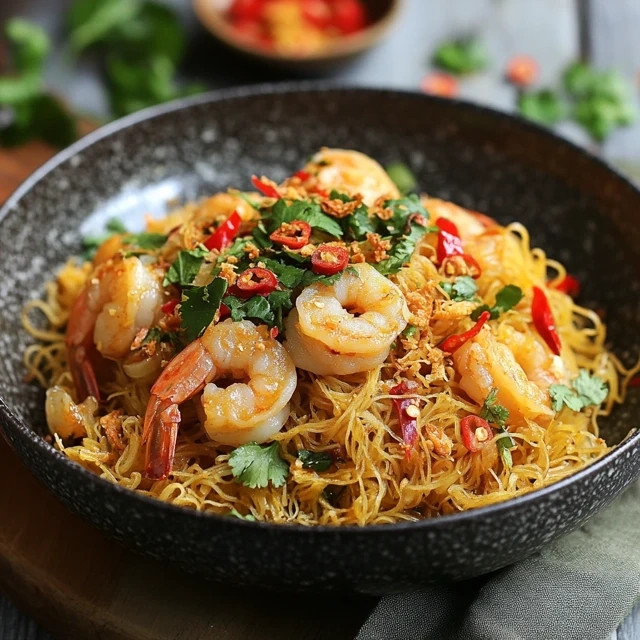Did you know Singapore’s street food is a UNESCO intangible cultural heritage? This place is a culinary wonderland. It offers a journey through Singapore street noodles that will excite your taste buds. It takes you to the lively hawker centers of Southeast Asia.
Singaporean cuisine is a mix of Chinese, Malay, Indian, and Peranakan traditions. These street noodles show the city’s rich cultural mix. They offer a burst of flavors in every bite.
From Maxwell Food Centre to local neighborhoods, Singapore street noodles are more than food. They’re a journey through generations of immigrant communities. Their cooking traditions come alive in every bite.
Key Takeaways
- UNESCO-recognized culinary heritage
- Multi-cultural flavor fusion
- Diverse ingredient combinations
- Rich historical cooking traditions
- Authentic street food experience
- Affordable and delicious dining
Origins and History of Singapore Noodles
Singapore’s street food culture is rich and fascinating. Many believe Singapore noodles came from Singapore, but they actually started in Hong Kong in the 1950s and 60s. The tradition of street food in Singapore goes back to the early 1800s, when vendors fed workers and immigrants.
A vibrant scene of a bustling Singapore street market in the early 20th century. In the foreground, a traditional roadside stall sizzles with the aromas of freshly prepared noodle dishes, their vendors skillfully tossing ingredients in woks over open flames. In the middle ground, a diverse crowd of locals and tourists browse the stalls, examining the array of delectable street food offerings. The background is filled with a tapestry of colorful shop houses, their intricate architectural details illuminated by the warm, golden light of the setting sun. The atmosphere is lively and authentic, capturing the rich history and cultural essence of Singapore’s iconic street food heritage.
The Hong Kong Connection
Singapore street noodles were first loved by blue-collar workers in Hong Kong. They needed meals that were filling and could keep them going all day. This dish became a favorite, mixing different cooking styles.
- Originated in Hong Kong during the 1950s
- Popular among working-class laborers
- Blend of Chinese cooking techniques
British Colonial Influence
British rule greatly shaped Singapore’s food scene. The island drew people from southern China, India, and the Malay Archipelago. This mix of cultures changed traditional dishes in exciting ways.
Evolution into Modern Street Food
In 2020, UNESCO honored Singapore’s hawker culture as Intangible Cultural Heritage. Today, hawker centers have over 30 stalls, offering tasty, affordable meals. The street food scene keeps growing, mixing old recipes with new ideas.
- UNESCO heritage status in 2020
- Represents multicultural culinary traditions
- Affordable dining experience
Essential Ingredients for Authentic Singapore Street Noodles
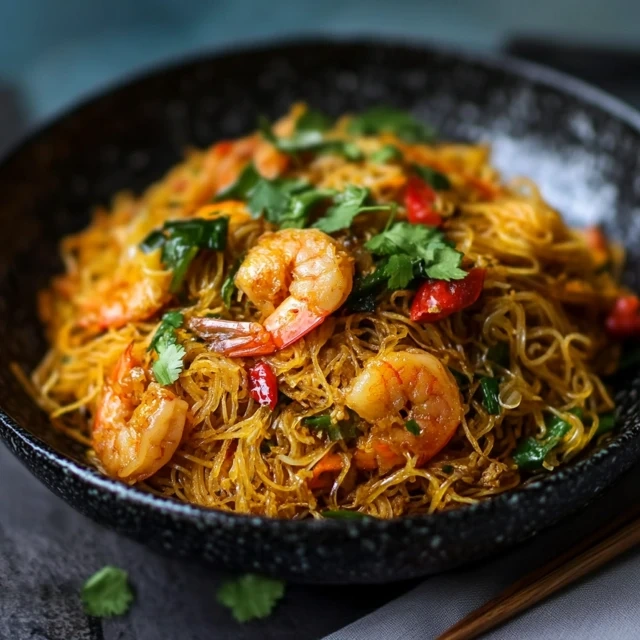
A neatly arranged collection of essential ingredients for authentic Singapore street noodles. In the foreground, freshly prepared egg noodles, bok choy, and bean sprouts. In the middle ground, marinated meat, shrimp, and a variety of aromatic spices and condiments, such as soy sauce, chili sauce, and crushed peanuts. The background features a blurred, dimly lit urban street scene, evoking the bustling atmosphere of a Singaporean hawker center. Warm, balanced lighting casts a golden glow, highlighting the vibrant colors and textures of the ingredients. The overall composition conveys the richness and complexity of Singaporean cuisine.
Making authentic Singapore street noodles needs the right ingredients. These ingredients add explosive flavor and traditional taste. Your journey starts with knowing the key parts that make these noodles special.
The base of great Singapore street noodles is top-notch ingredients. These ingredients show off Singapore’s diverse food scene. Each part is vital for the dish’s unique taste.
- Rice Vermicelli Noodles: Thin, delicate rice noodles are the perfect base for these vibrant dishes
- Protein selections like chicken, shrimp, or pork
- Aromatic spices including curry powder
- Fresh vegetables for crunch and nutrition
Spices are key to turning simple noodle dishes into amazing meals. The secret is in the curry powder. It’s a mix of:
- Turmeric
- Cumin
- Coriander
- Chili powder
Using fresh ingredients is a must for the best flavor. Your noodle dishes will stand out with top-quality proteins and fresh veggies. These add to the spice blend’s complexity.
| Ingredient Category | Recommended Quantity |
|---|---|
| Rice Vermicelli | 100g (3.5 oz) |
| Protein (Chicken/Shrimp) | 150g (5 oz) |
| Curry Powder | 3 teaspoons |
By picking each ingredient with care, you’ll make Singapore street noodle dishes that truly capture the essence of this lively food tradition.
The Perfect Rice Vermicelli: Choosing and Preparing
Singapore street noodles need perfectly cooked rice vermicelli to be great. Getting these noodles right is key to a good dish. It’s all about the texture that makes this dish special.
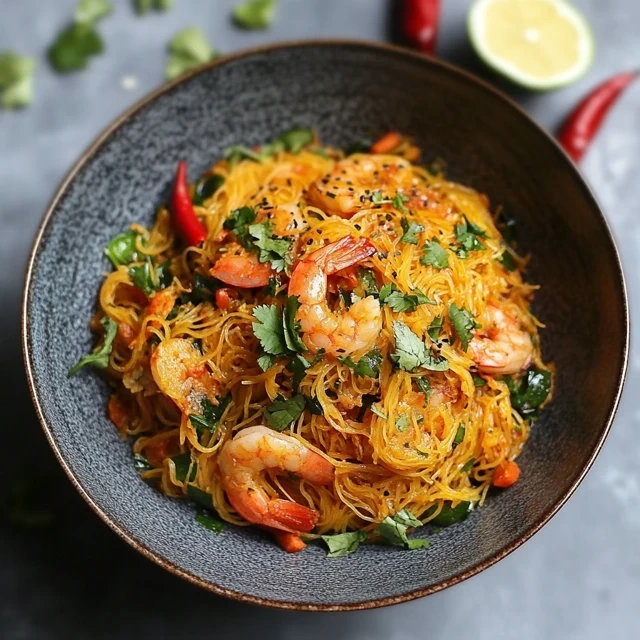
A close-up view of freshly prepared rice vermicelli noodles, glistening under warm, natural lighting. The noodles are arranged on a clean, white marble surface, their delicate strands intertwined in an artful display. In the foreground, a wooden spoon and a small bowl of light soy sauce sit nearby, suggesting the final touches to this essential ingredient for Singapore street noodles. The background is softly blurred, creating a sense of focus and emphasizing the prominence of the vermicelli. The overall mood is one of simplicity, care, and the anticipation of a flavorful culinary experience.
Handling rice vermicelli with care is important. To make great Singapore street noodles, follow some important steps.
Soaking Techniques
The right way to soak rice vermicelli is crucial. Here are some tips:
- Use hot water for soaking rice vermicelli
- Soak for exactly 5 minutes for the best texture
- Make sure the water is around 160-180°F
- Drain right after soaking to avoid mushiness
Texture and Length Guidelines
Getting the right texture for rice vermicelli is all about details. Look for noodles that are:
- Thin and clear
- About 6-8 inches long
- Just a bit firm
- Can soak up flavors well without breaking
Common Mistakes to Avoid
When making Singapore street noodles, avoid these mistakes:
- Boiling noodles instead of soaking
- Soaking too long, making them mushy
- Using cold water for soaking
- Not draining water fast enough
Mastering these steps will help you make Singapore street noodles that taste like they’re from a restaurant. You’ll get the real street food feel in your kitchen.
Protein Combinations That Make the Dish Shine
Exploring protein options is key to creating delicious Singapore Street Noodles. Your culinary adventure begins with understanding how different proteins transform the dish’s flavor profile in singaporean cuisine.
Traditional protein choices for Singapore Street Noodles include:
- Succulent shrimp
- Tender chicken
- Flavorful pork
- Savory tofu for vegetarian options
Each protein brings a unique character to the dish. Shrimp adds a delicate sweetness, while chicken provides a mild, versatile base. Pork contributes a rich, robust flavor that complements the curry seasoning typical in singaporean cuisine.
| Protein | Flavor Profile | Cooking Time |
|---|---|---|
| Shrimp | Sweet, delicate | 2-3 minutes |
| Chicken | Mild, adaptable | 5-6 minutes |
| Pork | Rich, robust | 6-7 minutes |
| Tofu | Neutral, absorbs flavors | 3-4 minutes |
Pro tip: Marinate your proteins before cooking to elevate the depth of flavor. For an authentic singaporean cuisine experience, try combining two proteins like shrimp and chicken for a more complex taste profile.
Experimenting with different protein combinations allows you to personalize your Singapore Street Noodles and discover your perfect flavor harmony.
The Art of Curry Seasoning in Singapore Noodles
Curry powder makes ordinary noodles into a special dish. It adds depth, warmth, and complexity. This makes Singapore street noodles a hit with food lovers everywhere.
Traditional Curry Powder Composition
A classic curry powder mix usually has:
- Turmeric (gives a golden color)
- Cumin (adds an earthy taste)
- Coriander seeds (bring citrusy notes)
- Ginger (adds a bit of heat)
- Black pepper (boosts the spiciness)
Balancing Spices and Heat
To make perfect curry noodles, know how to mix spices. Start with a little and add more as you like. Taste testing is key to achieving balanced flavors.
| Spice Level | Curry Powder Ratio | Recommended Use |
|---|---|---|
| Mild | 1 tsp per serving | Gentle introduction to curry flavor |
| Medium | 2 tsp per serving | Traditional street food intensity |
| Spicy | 3-4 tsp per serving | Bold, robust flavor experience |
Regional Variations
Each region has its own curry noodle style. Singapore’s version combines Chinese and British tastes. This makes it unique compared to other curry dishes.
Fresh Vegetables and Aromatics
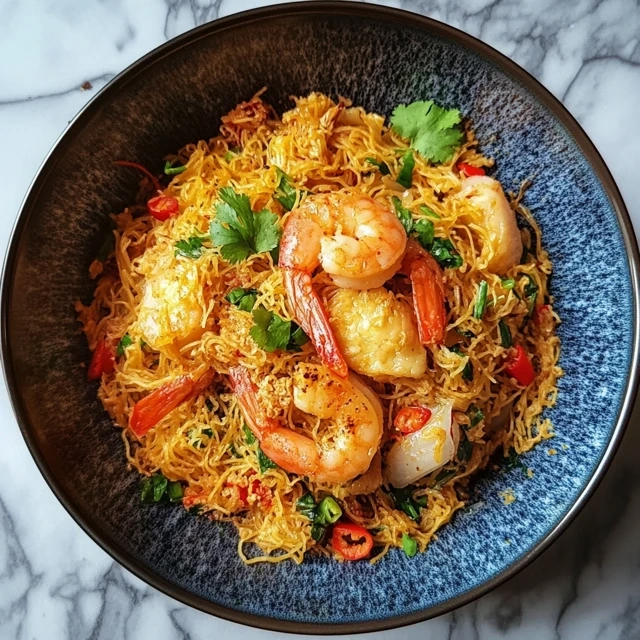
When making authentic Singapore street food noodles, fresh veggies and aromatics make all the difference. They turn a simple dish into a feast for the senses. The right mix of ingredients adds depth, texture, and flavor, making the dish unforgettable.
Choosing the right veggies is key to making delicious Singapore noodles. Here are some must-haves:
- Onions: 1 large onion, providing a sweet and savory base
- Red bell peppers: 1 medium, adding color and crunch
- Carrots: 2 medium, bringing natural sweetness
- Green onions: 3, offering a fresh, sharp finish
Aromatics are the magic that makes street food noodles special. Two ingredients stand out:
- Garlic: 2 cloves, minced for intense flavor
- Fresh ginger: 1 tablespoon, providing a warm, spicy undertone
When cooking your noodles, chop veggies evenly for even cooking. Sauté the aromatics first. This releases their oils, creating a fragrant base that fills the dish with authentic Singapore street food flavor.
Tip: Choose the freshest veggies you can find. Fresh, vibrant produce makes your street food experience more dynamic and delicious. It captures the true spirit of Singapore’s culinary tradition.
Mastering the Wok: Cooking Techniques
Cooking Singapore street noodles is an art that starts with the wok’s role in hawker fare. To create authentic flavors, you need to master certain cooking techniques. These techniques turn simple ingredients into a culinary masterpiece.
Heat Control and Timing
The secret to great hawker fare is precise heat management. Professional chefs use high heat to develop deep, complex flavors. Your wok should be very hot, around 425-450°F, before adding ingredients.
- Preheat the wok for 2-3 minutes
- Use a high-smoke point oil like peanut or canola
- Listen for the characteristic sizzle when ingredients hit the surface
Proper Stir-frying Method
Stir-frying is more than just stirring. It’s a calculated dance of motion and temperature. Quick, continuous movements prevent burning and ensure even cooking. Keep ingredients moving constantly, using a swift, circular motion that lifts and turns.
- Cut ingredients into uniform, bite-sized pieces
- Add ingredients in order of cooking time
- Maintain constant motion with a spatula or wok turner
Achieving Wok Hei Flavor
Wok hei, the breath of the wok, is that magical smoky essence found in hawker fare. This flavor comes from caramelization and the Maillard reaction at extremely high temperatures. Practice and a well-seasoned wok are your keys to unlocking this culinary magic.
Sauce Combinations and Ratios
Making the perfect sauce is key to amazing noodle dishes. Your Singapore Street Noodles will shine with the right mix of sauces. This mix turns simple ingredients into a work of art.
Important sauce ingredients for authentic noodle dishes include:
- Organic soy sauce: 1¼ tablespoons for depth and umami
- Rice vinegar: 1 teaspoon for tangy brightness
- Optional hot sauce: 1 tablespoon for heat
- Chili oil: ½ to 1 tablespoon for extra kick
Getting the sauce ratios right is essential for top-notch noodle dishes. The secret is balancing savory, sweet, and tangy flavors. Start with soy sauce, then add rice vinegar to balance it. A bit of chili oil can add a rich, complex taste.
For those watching their diet, these sauces are a win. They add flavor and nutrients. Each serving has 2,332mg of sodium, 7g of sugar, and 7g of protein.
Pro tip: Always taste and adjust. Your taste preferences are what matter most. Try different sauce ratios until you find your perfect blend.
Professional Tips for Restaurant-Quality Results
To make your Singapore street noodles restaurant-quality, use special techniques. These methods make your dish look and taste better. Singaporean food is all about precision and creative presentation.
Colors and textures are key to making dishes look great. Research shows that good-looking food can make people happier by 30%. Here are some tips for making your street noodles look amazing:
- Use contrasting colors to make your dish pop by up to 50%
- Add different textures to make the flavors seem more complex
- Pay attention to how you arrange food on the plate to avoid waste
Professional chefs see plating as an art. They use special techniques to turn simple ingredients into unforgettable meals. The four main parts of good plating are:
- Balance: How you arrange ingredients
- Color: Choosing colors that look good together
- Texture: Mixing different textures for interest
- Proportion: Making sure the dish looks balanced
When cooking Singaporean dishes at home, try using negative space and simple designs. This can make your dish look more elegant and improve its appeal by 15%.
| Presentation Technique | Potential Impact |
|---|---|
| Complementary Color Usage | 40% Appetite Stimulation |
| Texture Variation | 25% Flavor Complexity Increase |
| Minimalist Plating | 15% Customer Satisfaction Boost |
Getting restaurant-quality results takes practice and attention to detail. It also means being open to trying new things with your Singaporean street noodles. Your kitchen is where you can create unforgettable meals.
Health Benefits and Nutritional Value
Singapore street food can be a great part of a healthy diet if you choose wisely. The famous Singapore street noodles are not just tasty. They also have nutrients that can help your health if eaten in the right amounts.
Knowing what’s in street food helps you make better food choices. Let’s look at what makes these noodles so good.
Caloric Content and Macronutrients
A typical serving of Singapore street noodles has 300-400 calories. It has a good mix of nutrients:
- Protein from shrimp, chicken, or tofu
- Complex carbohydrates from rice vermicelli
- Healthy fats from vegetable oils
Dietary Modifications
You can make Singapore street noodles fit different diets:
- Gluten-free: Use rice noodles
- Vegetarian: Replace meat with tofu or vegetables
- Low-calorie: Reduce oil and add more veggies
Balanced Meal Planning
To eat street food healthily, plan your meals well. Eat smaller portions, add lots of veggies, and balance your meals. Choose brown rice noodles for more fiber and nutrients. They can help prevent type 2 diabetes and heart disease.
Conclusion
Your journey through Singapore street noodles shows a vibrant food scene. It goes beyond just one dish. From Chinatown’s busy streets to Geylang’s food stalls, Singapore has many noodle options. You can try laksa, char kway teow, wonton mee, and prawn noodle soup too.
The beauty of these dishes is more than their ingredients. They hold deep cultural meaning. Exploring Singapore’s street food lets you taste history and tradition. Each dish shares a story of cultural mix, colonial impact, and local creativity.
These dishes are also affordable, costing between SGD 5 to SGD 10. This makes trying them out easy for everyone. Whether you cook at home or plan a food trip, Singapore’s noodle culture is full of discovery.
It’s not just about the taste. It’s about community, history, and passion. Learning about Singapore street noodles helps you appreciate this rich food tradition.
Your adventure doesn’t stop here. Keep trying new things and exploring Singapore’s street food. Every bite invites you to learn more about this amazing food scene.
FAQ
What exactly are Singapore Street Noodles?
Singapore Street Noodles are a colorful stir-fry dish. It has rice vermicelli, curry seasoning, and various proteins and veggies. They are cooked in a hot wok, blending flavors typical of Singaporean street food.
Are Singapore Street Noodles actually from Singapore?
No, they actually come from Hong Kong. But, Singapore adapted them, mixing British colonial tastes with local flavors.
What type of noodles are traditionally used?
Thin, white rice noodles, or rice vermicelli, are the main noodles. They’re delicate and soak up flavors well.
What proteins work best in Singapore Street Noodles?
Shrimp, chicken, and char siu pork are classic choices. But, you can also use tofu, beef, or mix proteins for your taste.
How spicy are Singapore Street Noodles?
The spice level can vary. Traditional versions are mildly to moderately spicy. You can adjust it to your taste.
What cooking technique is most important for authentic flavor?
High-heat stir-frying, or wok hei, is key. It gives the dish its smoky flavor. A hot wok and quick cooking are essential.
Are Singapore Street Noodles gluten-free?
Yes, rice vermicelli is gluten-free. But, check soy sauce and curry powder for gluten-free options.
Can I make Singapore Street Noodles vegetarian?
Yes! Use tofu, tempeh, or more veggies. And, swap broth for a vegetarian version.
What are the key seasonings in Singapore Street Noodles?
The dish uses curry powder, soy sauce, and sesame oil. It also has garlic, ginger, and chili for depth.
How long does it take to prepare Singapore Street Noodles?
It takes about 20-30 minutes to make. This makes it a quick and tasty meal.
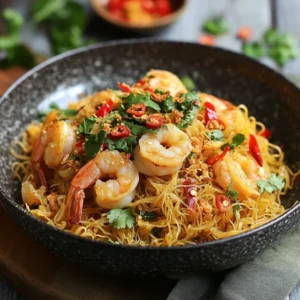
The Best Singapore Street Noodles with a Perfect Curry Kick
Ingredients
- For the Noodles And Protein:
- 8 oz thin rice vermicelli noodles
- 8 large shrimp peeled and deveined
- 1 small chicken breast thinly sliced
- 2 tablespoons vegetable oil
- 2 eggs lightly beaten
- 1 small onion thinly sliced
- 1 bell pepper red or yellow, julienned
- 1 small carrot julienned
- 2 cloves garlic minced
- 1 teaspoon grated ginger
- 2 green onions sliced
- For the Sauce:
- 1 ½ teaspoons curry powder
- 1 teaspoon turmeric
- 2 tablespoons soy sauce
- 1 tablespoon oyster sauce
- 1 teaspoon sesame oil
- 1 teaspoon sugar
- ½ teaspoon white pepper
- ½ teaspoon red pepper flakes optional
- ½ cup chicken broth
Instructions
- Step 1: Prepare the Noodles
- Soak the rice vermicelli noodles in warm water for 5-7 minutes, or until softened but still slightly firm. Drain and set aside.
- Step 2: Cook the Proteins
- Heat 1 tablespoon of oil in a large wok or skillet over medium-high heat.
- Add the chicken slices and cook for 3-4 minutes until lightly browned.
- Add the shrimp and cook for another 2 minutes until pink. Remove both from the pan and set aside.
- Step 3: Scramble the Eggs
- In the same pan, add a little more oil if needed. Pour in the beaten eggs and scramble until just set. Remove and set aside.
- Step 4: Stir-Fry the Vegetables
- Add the remaining 1 tablespoon of oil to the pan. Stir-fry the onion, bell pepper, and carrot for 2-3 minutes until slightly softened.
- Stir in the garlic and ginger, cooking for 30 seconds until fragrant.
- Step 5: Add the Noodles And Sauce
- Return the chicken, shrimp, and eggs to the pan.
- Add the softened noodles and pour in the sauce.
- Toss everything together, stirring frequently for 3-5 minutes, until the noodles absorb the sauce.
- Step 6: Garnish And Serve
- Stir in the green onions and remove from heat.
- Serve immediately with lime wedges and extra chili flakes if desired.
Notes
- Make it vegetarian: Swap chicken and shrimp for tofu or mushrooms.
- For extra spice: Add sriracha, chili oil, or more red pepper flakes.
- Best noodle texture: Avoid over-soaking the vermicelli to keep them from getting mushy.
